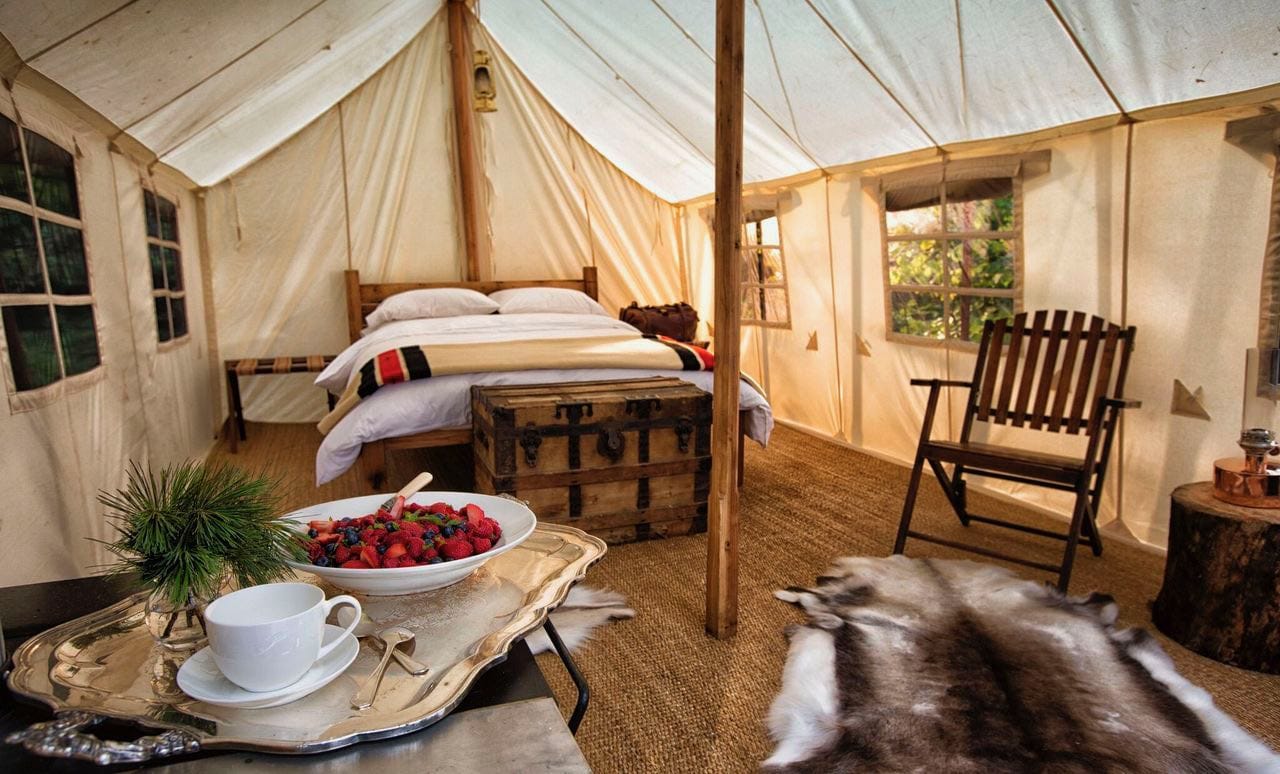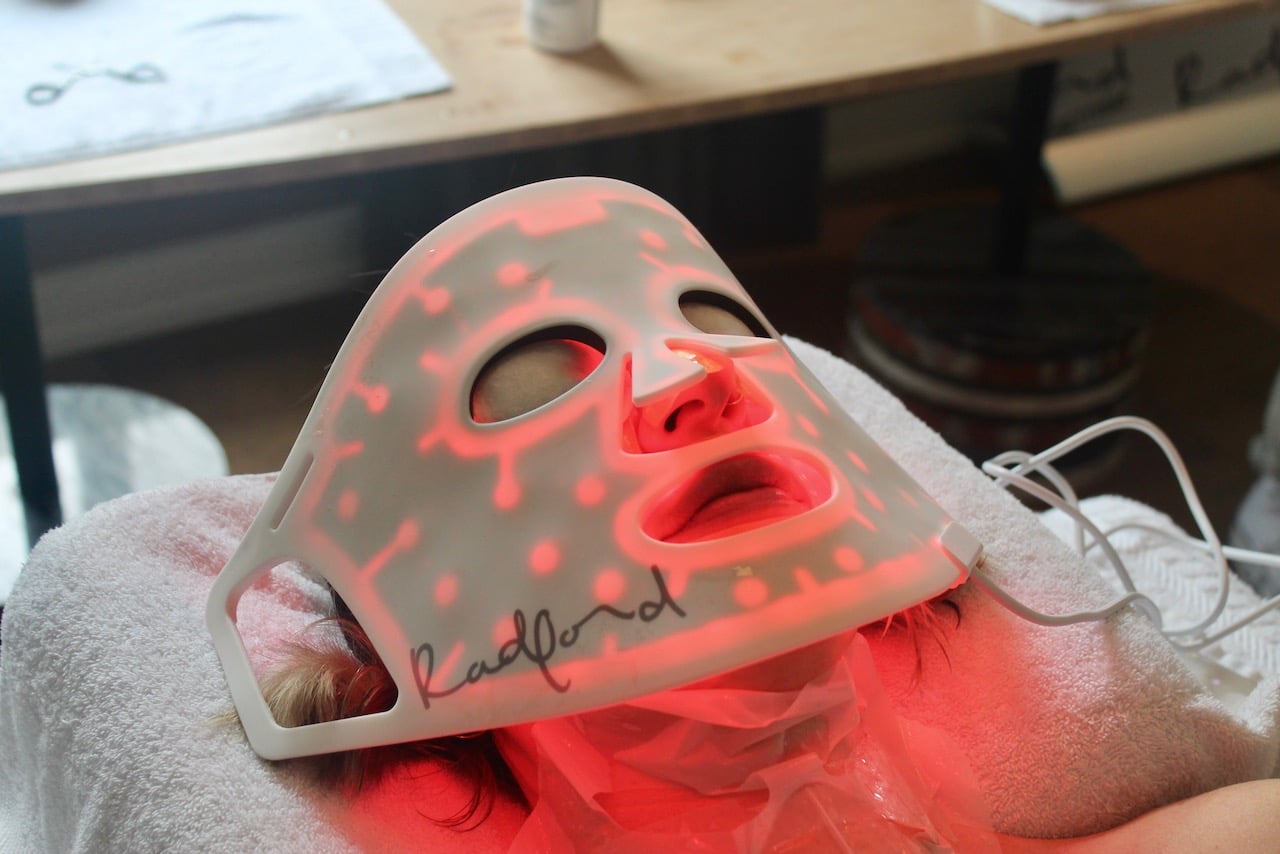Iceland is a real drama queen when it comes to landscapes. With ever-changing weather, you can veer from floods of rain to gorgeous sunny skies fit with rainbows in less than half an hour, all of which serves to lighten or darken the mood to great effect. Even on a mid-August day, whistling winds are likely to bite through your clothes; it’s much better to perch inside with some coffee and kleinur. There’s even a phrase for it: gluggaveður, which translates into “window weather.” A great way to experience these incredible morphing landscapes is to hop in a car and check out these attractions from both sides of the glass.

All of five of these natural beauties can be accessed over a two-day drive from the capital, Reykjavík. Head south on the Ring Road (road number 1) to take in the majority of the sights below. If you have a couple of extra days to spare, you’ll have time to head over to Snæfellsjökull national park, located north west of the capital (take road 1 north and then 54 at Bogarnes).
5 Natural Beauties Found Along Iceland’s Ring Road
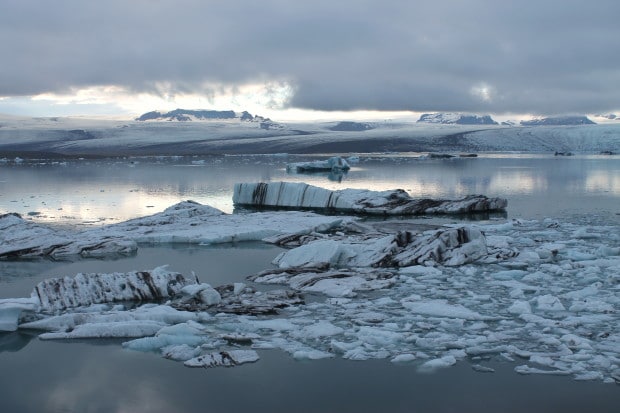
Jökulsárlón glacial lagoon in the southeast
Of all the landscapes I took in on the trip, this one was by far the most breathtaking. We arrived just at sundown, when most of the other tourists had left and the café had shuttered. The atmosphere was completely still and the only sound to be heard was the gentle crack of the icebergs working their way through the lagoon to the mouth of the sea. Behind it all sits the giant Breiðamerkurjökull glacier, acting as a backdrop to the stunning striated icebergs. I’ve never seen something so magical.
As beautiful as it all is, visiting the lagoon is bittersweet, as it serves as a major visual reminder of global warming. Since 1975, the lagoon has expanded dramatically in size — 9 times, to be precise — and it’s only going to grow. Something to think about.

Black beaches on Iceland’s south looking over to Vik
Reynisfjara is an incredible black sand beach located about 180 km from Reykjavík on the Ring Road. With obsidian-black pebbles lining the coastline, this beach is considered to be the country’s most impressive stretch of black sand. Columns composed of basalt — lava rock — form a cliff and form those highly recognizable stacks in the sea: Reynisdrangar. Vík itself only has about 450 residents and is a pretty sleepy village, save for the tourists. A spiffy new Icelandair hotel was recently completed which is bound to be quite the added draw.
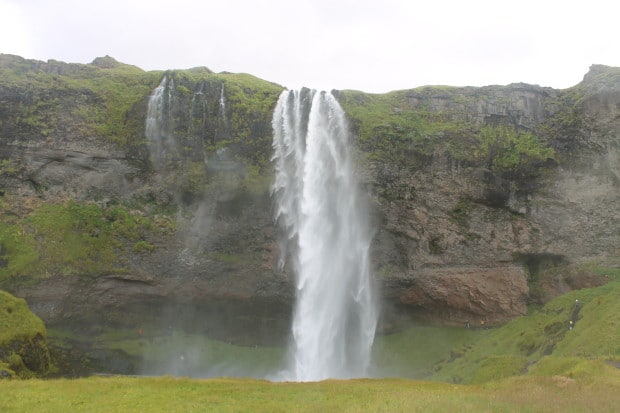
Seljalandsfoss where you can walk behind the waterfall
Located right along the Ring Road, Seljalandsfoss waterfall is a major draw due to its unique characteristics. This heaving foss, about 120 km from the capital, appears suddenly in a green field, reaching up 60m and with a path that skirts all the way behind it. Visitors can experience it from all angles; experiencing all that power surrounding you is pretty neat. Best to bring a poncho with you, as there’s really no escaping the mist — especially with all that Icelandic wind.
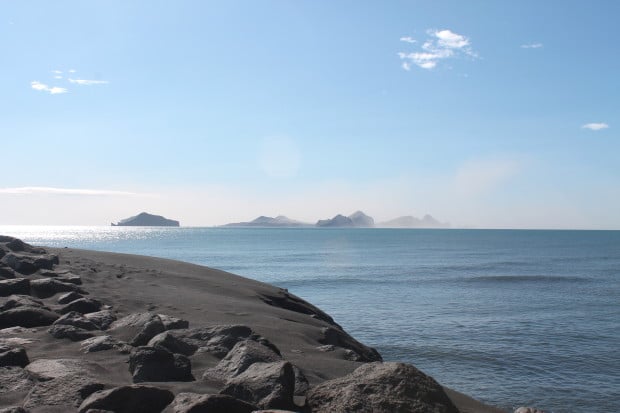
View out to Vestmannaeyjar archipelago
Vestmannaeyjar — or the Westman Islands, for those who’s Icelandic needs fine-tuning — are a set of islands located at the southernmost point of the country. Created through submarine volcanic eruptions located along a fissure, the clutch includes Heimaey, the largest island, and Suritsey, which emerged back in 1963. Surtsey continued the pattern of erupting and growing until 1967, when it reached 170m in height.
If you’ve time, be sure to take the ferry over to Heimaey and explore the picturesque island that’s home to over 4,000 people. After a spellbinding view of the cliffs on the way in, pop into Tanginn restaurant by the ferry docks for some tasty plokkfiskur (fish stew) before hiking up the hills. Visiting the Eldheimar Museum is a must as it examines the 1973 volcanic eruption, which forced most residents to flee the island and buried over 400 houses. The excavated remains of a house — buried under metres of ash — are the linchpin of the museum, which was in fact built around them. Of course, that very same volcano that caused such destruction is visible from every vantage point on Heimaey, an eerie reminder of nature’s powers.

Sheep chilling in Snæfellsjökull National Park
One would be seriously hard-pressed to not spot sheep while driving around Iceland. Personally, I have never encountered so many sheep in my life. Their wild coats marked by shaggy tufts of hair reflect the rugged volcanic landscape in which they reside. These feral creatures first arrived on the island over 1,000 years ago, thanks to the early Viking settlers. In this national park, located on the westernmost part of the Snæfellsnes peninsula, spot them while you cruise around the craggy volcanic hills, painted in shades of green thanks to all the moss. If you cannot strip the image of the sheep from your mind, pick up some wool, a sheepskin rug for your home — or better yet, the iconic Fuzzy foot-stool.
One thing to consider; if you thought that your rental would be the only car puttering along the road, think again. Tourists are bussed to and from all this eye-candy, so expect to encounter visitors wherever you head. The only untouched spot I visited was the national park; a silent drive was interrupted only by the presence of the roaming sheep. If you’re really keen on being one with nature, aim to be the first or last visitor of the day.
Written by Karolyne Ellacott

